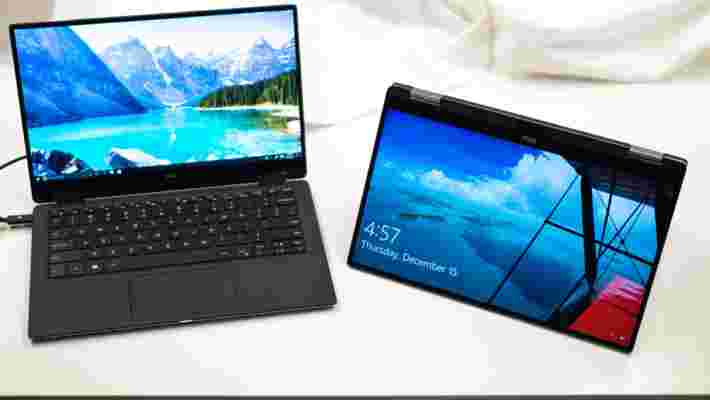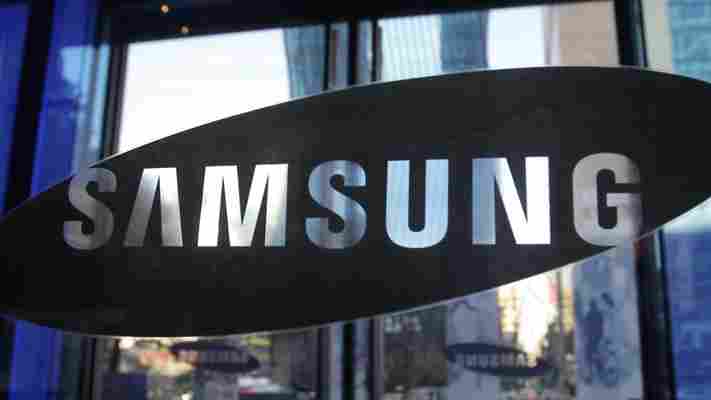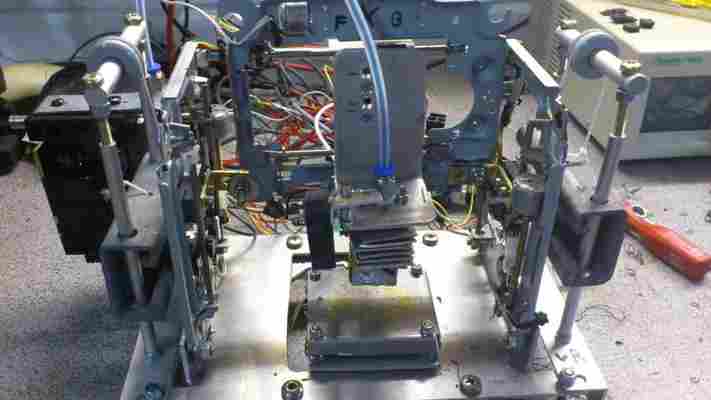When I reviewed Dell’s XPS 13 last year, I called it a nearly perfect ultraportable – so long as you were looking for a traditional laptop form factor. But with 2-in-1 systems becoming ever more popular, I missed the ability to turn the laptop into a tablet.

Dell’s new XPS 13 2-in-1 has fixed that issue with a rotating hinge. The traditional XPS 13 is sticking around, mind you, but this is the one you’ll probably want.
At first glance, the XPS 13 2-in-1 looks very much like its predecessor, with the standout InfinityEdge display that does away with nearly all bezels except for the bottom one. Its combination of metal and soft-touch carbon fiber materials make for a classy design that’s also relatively easy on the wrists.
Look a bit more closely though, and the differences become more apparent. For one, the laptop is thinner than before, going from 8.7 mm thick at the front to 13.7 mm at the back. Add that Dell was able to remove the fans this time around, it’s an all-around sleeker design.
This is in part to make the laptop easier to use in tablet mode, which works exactly like you’d expect – push the screen around its hinge to use it in a ‘tent’ mode or as a tablet. The tent mode also mitigates the most recurring complaint on recent XPS 13 and 15 models: The webcam is located below the screen, perfect for a clear shot of your snot.
While that’s still the case here, as the bottom of the screen moves to the top when flipped around for tent mode, you can at least have video calls with a normal viewing angle, so long as you don’t need the built-in keyboard.
Another benefit to the tablet mode: Active Pen support. With Microsoft placing a bigger emphasis on pen support than ever, it’s a welcome addition, although it’s an optional purchase.
Also, this time around the laptop will come in an all black metal finish as well, which is perfect for us who prefer the stealth look.
Internally, the laptop is about what you’d expect from a Kaby Lake convertible:
Core i5-7y54 or Core i7-7Y75 processors
QHD+ (3200 x 1800) and 1080p resolution options
4/8/16 GB RAM options
128 GB SATA, 256/512/1TB PCIe SSD
Intel HD 615 integrated graphics
Two USB-C ports, one of them Thunderbolt 3 (both with charging support)
MicroSD slot
Active Pen support (2048 pressure levels)
Windows Hello Support via fingerprint reader
The biggest question mark remains battery life. As always, it varies depending on your configuration. The base model, with 4GB of RAM, a Core i5 processor, FHD display, and a 128 GB SSD can hit 10 hours and 21 minutes, on a Netflix battery rundown, according to Dell’s own testing.
The screen and processor provide the biggest battery impact. The fully spec’d model with the QHD panel and the Core i7 chip is rated at 7 hours and 12 minutes for the same test, which involves streaming Netflix 1080p content using the Native Netflix Windows 10 app. Your mileage will vary, but Dell does sell a battery pack should you need up to 11 hours extra juice.
It’s also worth noting the use of a lower power consumption Y series processor, which enabled the fanless design and thinner form factor. While I had some concerns this would mean decreased performance, Dell says it should actually be a teensy bit faster than its Skylake predecessor. There’s still the risk the laptop could be more prone to throttling under heavy performance loads, however.
These are question marks we’ll have to address once we get our hands on a final review unit. If it all holds up though, Dell may have another winner in store. The XPS 13 2-in-1 will start shipping later this month, starting at $999.
Samsung reveals the mini version of its Galaxy S5 smartphone, will go on sale in Russia first
Samsung has taken the wraps off the mini version of its flagship Galaxy S5 smartphone. The 4.5-inch Galaxy S5 mini has pretty much the same features as its parent device, featuring IP67 certification for its display screen, an ultra power saving mode, a heart rate monitor, and a fingerprint scanner.

However, in line with its reduced size, the Galaxy S5 mini does have a few downgraded specs. It is powered by a quad-core 1.4 GHz processor and 1.5GB of RAM, as well as an eight-megapixel camera.For comparison, the Samsung Galaxy S5, which was unveiled back at Mobile World Congress in February, runs on a quad-core 2.5 GHz processor, 2GB of RAM and is equipped with a 16-megapixel camera.
Samsung’s latest device will be available in Russia starting early this month and there are plans to roll it out to the global market. There are no details on the price yet for now, but it’s expected to be considerably lower than the $855 suggested retail price for the 32GB version of the Samsung Galaxy S5 LTE.
Don’t miss – Samsung Galaxy S5 review: Incremental is the new cool
Thumbnail image via Chung Sung-Jun/Getty Images
This guy built a 3D printer for under €100
Many believe a 3D printer will be in everyone’s home one day. If you’re okay with building one yourself, you can join the revolution today, and it won’t even cost you that much.

Instructables member Gelstronic decided to build a 3D printer for less than €100 (about $136). He had to buy a few parts, but most of them are from old PCs. Here is the result:
Since the 3D printer is limited by the length of DVD trays, the build area is quite small (40x40x40 mm), but nevertheless the goal has been achieved. Since all the parts are available for very cheap, you can build one yourself. In fact, there are instructions available in a 10-step format over at the Instructables link below.
➤ Poor Man’s 3D Printer
Image Credit: Gelstronic
